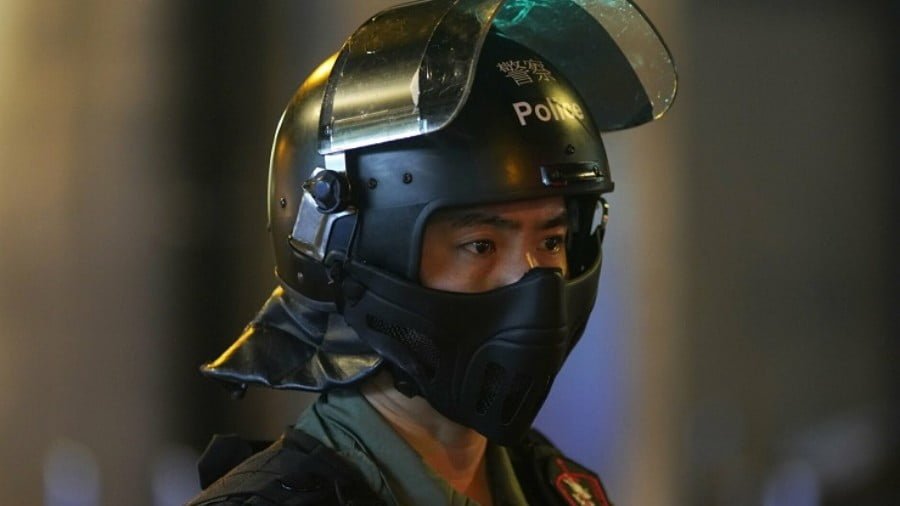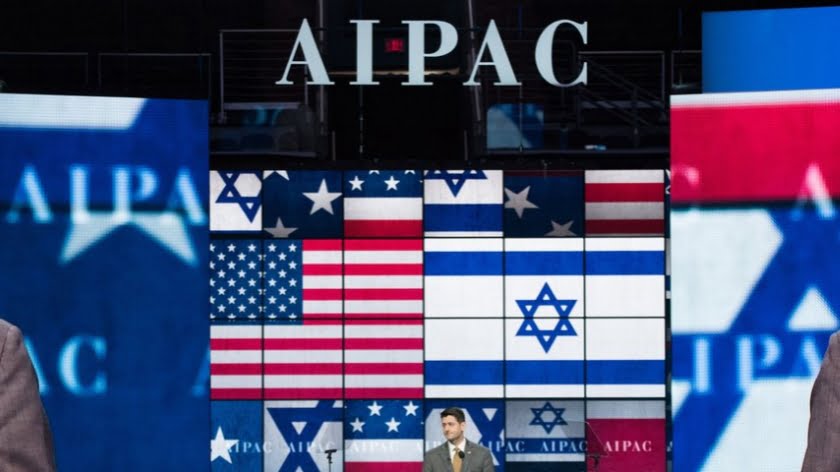Recent Events in Hong Kong and Taiwan
The current state of affairs in Hong Kong and Taiwan remains one of the key sources of tensions plaguing the relationship between the two world powers, i.e. the United States and the PRC.
There was yet another rise in anti-Chinese sentiment in Washington in response to the passing of the Hong Kong national security law by the Standing Committee of the National People’s Congress (NPCSC) on June 30, which came into effect July 1. In fact, the aforementioned act is an integral part of the lawful process of making legal systems between Hong Kong and “mainland” China more compatible, which started after the end of the British colonial rule in Hong Kong (that lasted 99 years) in 1997.
According to the Sino-British Joint Declaration signed in 1984, “Hong Kong’s previous capitalist system and its way of life would remain unchanged for a period of 50 years” until 2047. However, there was no detailed description about what this would mean in practice. It is difficult to imagine that the legal and political systems “inherited” from colonial times in one of the largest cities of a country, which is undergoing a radical transformation right in front of our eyes, would remain completely unchanged over a period of 50 years.
Incidentally, the enactment of the Hong Kong national security law means that the investigation and prosecution of certain criminal acts “will be subject to oversight from the Chinese government”. The author would like to remind his readers that one of the main causes of the Hong Kong protests, which started in spring 2019, was the extradition bill introduced by the government of Hong Kong, headed by Chief Executive Carrie Lam, and supported by Beijing. In the end, she was forced to suspend the aforementioned initiative.
With the passing of the Hong Kong national security law, it would seem that Beijing has firmly taken control over the situation in Hong Kong, judging by the measures that followed. The most significant was the decision by Carrie Lam’s government to postpone the Hong Kong Legislative Council election, originally scheduled for September 2020, by a year. According to officials, the move was made solely based on public safety concerns since citizens of the Hong Kong Special Administrative Region of the PRC (HKSAR) would not be able to exercise their right to vote without endangering their health amid the COVID-19 pandemic.
Afterwards, several well-known activists and participants of last year’s protests, including media tycoon (and perhaps financial backer of the movement) Jimmy Lai and his two sons, were arrested. They were, however, all released on bail several days later. Still, the impact of the recently enacted Hong Kong national security law must have been felt loud and clear among any potential law breakers.
As expected, Washington’s reaction towards Beijing’s recent actions has been negative (as was the case earlier under similar circumstances). And in this article, the author would like to mention only the following responses by the US government. Sanctions were imposed on Carrie Lam and 10 other senior Chinese and Hong Kong officials; from September 25, 2020, goods produced in Hong Kong and exported to the US must be labeled as “Made in China”, and threats were made by the Trump administration “to hurt the Hong Kong dollar’s US dollar peg”.
Admittedly, the US reaction towards Beijing’s moves in Hong Kong is quite rational. If China has chosen not to abide by the 1984 Sino-British Joint Declaration by transforming Hong Kong into a Chinese city ahead of schedule, the United States can treat the HKSAR as part of the PRC.
This may mean that Washington can completely strip Hong Kong of the special status it has come to enjoy with the US. For instance, the HKSAR could become a part of the trade war that the United States has been waging against the PRC for the past two years.
At this point, it is worth considering what is at stake here. What effect does Hong Kong have, nowadays, on China’s economy and on PRC’s financial and commercial ties with the rest of the world? Clearly, guaranteeing security within a country like the PRC is an invaluable factor that also has to be considered.
Having taken into account the ongoing negativity plaguing the relationship between China and its key geopolitical opponent (i.e. the United States), it is also worth noting, first and foremost, that the importance of Hong Kong as a financial and economic center has declined since it became a part of China. For instance, in 1993, “Hong Kong’s economy was more than a quarter the size of China’s”, while currently, its GDP stands at approximately 3% of the PRC’s.
Still, in large part, Hong Kong continues to play the role of a gateway via which a substantial portion (up to 70% before 1997 and during a few years afterwards) of convertible currency, essential for any nation, enters China’s economy.
The HKSAR has been losing its prominence as a center of financial operations for various reasons (which PRC’s actions have had nothing to do with) in China as well as Asia as a whole. In fact, in the PRC, Shanghai, Beijing and Shenzhen (the latter is located near Hong Kong), have, in large part, taken over this role, while in Asia, Singapore’s prominence in this sphere has risen. Recently The Japan News reported that in response to possible consequences of the enforcement of Hong Kong’s national security law, attention was “being focused on whether Tokyo” could establish itself as Asia’s financial center.
Hence, despite the aforementioned changes, it is still important for Beijing that Hong Kong’s special status is not severely impacted, as the HKSAR continues to play the role of PRC’s gateway to external financial markets. After all, China will need time to implement policies of the Communist Party leadership aimed at making the nation’s economy more similar to that of Hong Kong, which will ensure capital continues to flow into the country from global “financial leaders”. And in the middle of July, Chinese President Xi Jinping “sought to reassure global business leaders about China’s commitment to” this course.
Still, achieving the status of a great economy and gaining a reputation similar to that of Hong Kong in the eyes of global “financial leaders” will not happen quickly. In fact, China’s ambitions may remain unrealized because of the current political environment (as mentioned before), as evidenced by the potential (for now) economic “decoupling” between the PRC and its key external partner (and geopolitical rival).
Hence, as Beijing continues with its implementation of the Hong Kong national security law, it will most likely respond to the US as a hero in a film who plans to strike his obtuse partner without unnecessary violence yet forcefully. For the aforementioned reasons, the author thinks that Beijing will use the former approach to punish the most stubborn of the Hong Kong protesters.
In fact, the PRC is unlikely to use unnecessary violence for another important reason for Beijing. The author is referring to PRC’s key foreign policy issue to do with the situation involving Taiwan.
The Chinese leadership cannot but take into account the fact that all of its actions in relation to Hong Kong are being carefully observed by its “well wishers” at the helm of the government in Taiwan. The latter probably cannot resist the opportunity to reiterate the following statements: “Look at what those Commies are doing to the freedom-loving people of Hong Kong. Thus, there is really no need for the “One country, two systems” policy here, we prefer to live with our neighbor, China, in peace but apart”.
At this point, the author would like to highlight an important aspect of the Taiwan issue, i.e. the fact that the aforementioned stance taken by the Taiwanese leadership is fully supported by Washington. The latter is pursuing its own long-term strategy aimed at having Taiwan recognized as an independent nation with a right to establish diplomatic ties with other countries.
A big step towards realizing this goal was made on August 9, when US Secretary of Health and Human Services Alex Azar paid a three-day visit to Taiwan. The trip was “billed as the highest-level visit since Washington and Taipei broke formal diplomatic relations in 1979”. The “first memorandum of understanding (MOU) on health cooperation between” Taiwan’s Ministry of Health and Welfare and the US Department of Health and Human Services was signed during the trip. The high ranking US official also met with President Tsai Ing-wen.
In the meantime, yet another (fairly strange) event took place. The social media accounts of the US Embassy to China had dropped the word “China” from “Beijing, China” in the logo. On August 12, the diplomatic mission “explained that the change was part of a normal branding campaign and similar changes” would be made to the logos of US embassies in other countries. Since the move coincided with the visit by US Secretary of Health and Human Services to Taiwan, China’s newspaper the Global Times reported that it sparked wide speculation among the Chinese public about whether or not the step was meant to “tarnish the one-China principle”.
And if the change was indeed meant to express animosity towards the PRC, the current state of relations between the two leading nations really does look grim.
By Vladimir Terekhov
Source: New Eastern Outlook







